My Top 4 Records
I’m making this post to answer a “coffee question” from my dad: What are my four favorite albums? Or rather, the most challenging ones I’ve come across.
So I decided to treat this exercise somewhat formally, simply for the pleasure of doing it well.
First of all, I should say that I’m NOT a record collector; more than a music lover I’m an audiophile—and in that sense, a bit of a “hoarder.” I’ve never counted them (and I don’t intend to), but I’ll share a photo of what I have. They’re not many, really, but they make up the soundtrack of my life.
I’ll start with the four albums I would take with me to a desert island:
1.- Abbey Road. Formally, it’s the last studio album recorded by the Beatles, since Let It Be was “shelved” amid various complications and released more as an epilogue.
I own several editions, and my favorite is the 2019 remastered version.
I should add that the first time I went to London, my very first activity in the morning was to go and take a photo at the iconic Abbey Road Studios.
Abbey Road is the eleventh studio album by the English rock band the Beatles, released on 26 September 1969, by
Apple Records.
The album is known for its iconic cover photo of the band crossing
Abbey Road, and for its diverse musical styles, including rock, pop, and progressive rock.
Paul McCartney suggested to producer George Martin that the group get together and make an album "the way we used to do it", free of the conflict that had begun during sessions for The Beatles (also known as the "White Album"). Martin agreed, but on the strict condition that all the group—particularly John Lennon—allow him to produce the record in the same manner as earlier albums and that discipline would be adhered to.
I own the 2011 edition remastered version.
This cover image was possibly what marked my first encounter with the visual arts. Thousands of questions came to my mind when I was around nine or ten years old, at my maternal grandmother’s house.
Storm Thorgerson had accompanied the band on their 1974 tour and had given serious thought to the meaning of the lyrics, eventually deciding that the songs were, in general, concerned with "unfulfilled presence", rather than Barrett's illness. This theme of absence was reflected in the ideas produced by his long hours spent brainstorming with the band.
he album's cover images were photographed by Aubrey "Po" Powell, Thorgerson's partner at the design studio
Hipgnosis, and inspired by the idea that people tend to conceal their true feelings, for fear of "getting burned", and thus two businessmen were pictured shaking hands, one man on fire.
"Getting burned" was also a common phrase in the music industry, used often by artists denied royalty payments. Two stuntmen were used (Ronnie Rondell and Danny Rogers), one dressed in a fireproof suit covered by a business suit. His head was protected by a hood, underneath a wig.
The photograph was taken at Warner Bros. Studios in California, known at the time as The Burbank Studios. Initially the wind was blowing in the wrong direction, and the flames were forced into Rondell's face, burning his moustache.
The two stuntmen changed positions, and the image was later reversed. The versions released on Harvest label (in Europe) and on Columbia label (among others, United States, Canada and Australia) use similar, but different photos from the photo session.
The album's song's lyrics variously express longing, alienation, and
sardonic criticism of
the music industry. The bulk of the album is taken up by "
Shine On You Crazy Diamond", a nine-part tribute to the Pink Floyd co-founder
Syd Barrett, who had left seven years earlier due to his deteriorating mental health. Barrett coincidentally visited during the recording. As with their previous release,
The Dark Side of the Moon (1973), Pink Floyd employed studio effects and
synthesisers.
Syd Barrett's visitOn 5 June 1975, on the eve of the second North American leg of their
Wish You Were Here Tour, Gilmour married his first wife,
Ginger. That day, the band were completing the mix of "Shine On You Crazy Diamond" when an overweight man with shaven head and eyebrows entered, carrying a plastic bag. Waters did not recognise him, and Gilmour presumed he was an EMI staff member.
Wright presumed he was a friend of Waters, but realised it was Barrett. Mason also failed to recognise him, and was "horrified" when Gilmour identified him. In Mason's Pink Floyd memoir
Inside Out, he recalled Barrett's conversation as "desultory and not entirely sensible".
Cover artist
Storm Thorgerson reflected on Barrett's presence: "Two or three people cried. He sat round and talked for a bit but he wasn't really there." According to Gilmour, Barrett "came two or three days and then he didn't come any more."
or "Zoso" or Four Symbols, The Fourth Album or "Stairway to heaven.
The untitled fourth studio album by the English
rock band
Led Zeppelin, commonly known as Led Zeppelin IV, was released on 8 November 1971, by
Atlantic Records. It was produced by the band's guitarist,
Jimmy Page, and recorded between December 1970 and February 1971, mostly in the country house
Headley Grange. The album contains one of the band's most well-known recordings, the eight-minute-long "
Stairway to Heaven".
I own several editions, and my favorite is the 2014 super deluxe edition:
I should add that I’ve painted several canvases which I have named after the song title:
The Battle of Evermore.
The picture on the front of the album of an old man carrying a bundle of sticks on his back was bought in an antique shop in
Reading, Berkshire by Plant. The picture was then affixed to the internal, papered wall of a partly demolished suburban house for the cover photograph to be taken.
Research in 2023 suggests that the image, which had previously been described as an oil painting, is a black and white photograph dating to 1892 which had been hand-coloured.
The original photograph was taken by Ernest Howard Farmer (1856 – 1944), the first head of the school of photography at
Regent Street Polytechnic. The research also suggests that the stooped figure is Lot Long (or Lot Longyear, 1823–1893), a
thatcher from
Mere, Wiltshire.
 |
| Lot Long or Lot Longyear, 1823–1893 |
4.- Into the Labyrinth
Into the Labyrinth is the sixth studio album by Australian band
Dead Can Dance, released on 13 September 1993, by
4AD. It marked a strong shift from their previous albums, putting ethnic music influences at the forefront, as would be the case in the later albums. It was their first album completed on their own without the aid of guest musicians.
I own the 2010 edition
Mobile Fidelity Sound Lab 2 x Vinyl, Limited, Numbered, and Remastered version.
While not necessarily a
concept album, this link adds some conceptual cohesion to the album. This theme is reflected in several song titles: "Ariadne" (the legendary
Ariadne giving her clew to Theseus); "Towards the Within" (of the Labyrinth, the Minotaur being at the centre); "The Spider's Stratagem" (waiting at the centre of her web like the Minotaur waiting at the centre of the Labyrinth—but also a
Bertolucci film adapting a
Borges short story from Labyrinths): and "Emmeleia" (the Greek dance of tragedy).
And now...
Here are four of my albums that have taken me the longest time to track down:
Electric Ladyland is the third and final studio album by
the Jimi Hendrix Experience, released in October 1968. A
double album, it was the only record from the Experience with production solely credited to Hendrix. The band's most commercially successful release and its only number one album, it was released by
Reprise Records in the United States on October 16, 1968
I own the 1972 edition with the original naked models cover.
Hendrix had written to Reprise describing what he wanted for the
cover art, but was largely ignored. He expressly asked for a color photo by
Linda Eastman (later known as Linda McCartney following her marriage with
Paul McCartney) of the group sitting with children on
the sculpture of
Alice in Wonderland in
Central Park, and drew a picture of it for reference.
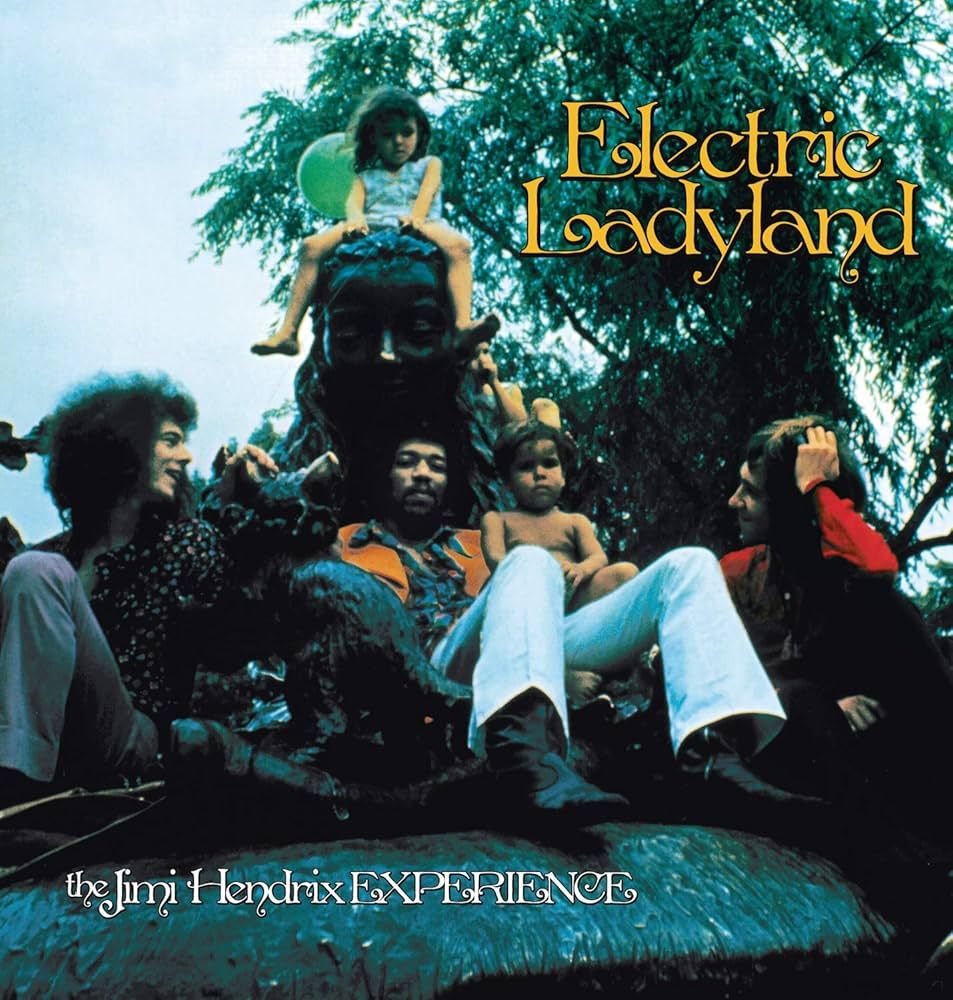
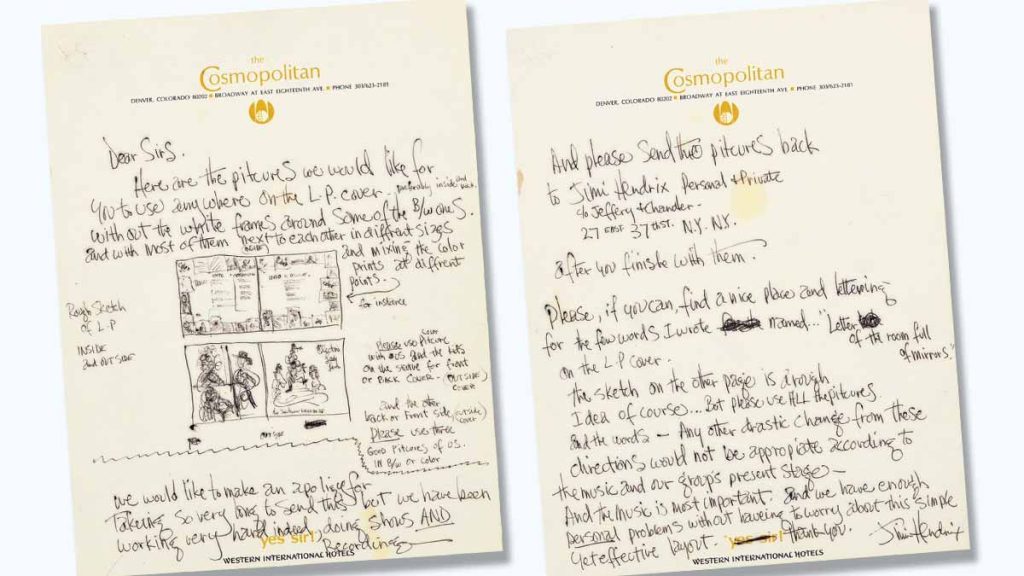
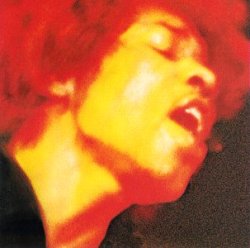
Track Records used its art department, which produced a cover image by photographer
David Montgomery, who also shot the inside cover portrait of Hendrix, depicting nineteen nude women lounging in front of a black background. Hendrix expressed initial displeasure and surprise with this "naked lady" cover (but later told Rolling Stone magazine that he "dug it anyway"), much as he was displeased with the
Axis: Bold as Love cover, which he found disrespectful.
The cover was banned by several record dealers as "pornographic", while others sold it with the gatefold cover turned inside out, or in a brown wrapper.
The album was also issued in two parts in the UK, with different cover art.
In France and the
Benelux countries, Hendrix's recordings were released by
Barclay Records, and Electric Ladyland featured a front cover photograph by
Alain Dister, and inner sleeve photographs by Jean-Pierre Leloir and Donald Silverstein.
2.- Interspecies Communication
"Interspecies Communication" is a 1995 album by the Swedish artistic collective Lucky People Center. The album is an eclectic mix of electronic music styles, including chill out, ambient techno, progressive house, and hard trance
according to DJ Basilisk. The collective, known for their film "Lucky People Center International," explores various musical styles on this release.
This album represents, to me, my years as a student in Belgium and, more specifically, my introduction to the epicenter of electronic music in Brussels and Central Europe. Lots of craziness, lots of over‑the‑top partying a random young rasta mexican in his 20s.
The name Lucky People Center was inspired from an illegal Gothenburg dance club in the early 1990s.
The collective started as an underground illegal nightclub in
Gothenburg. It moved its base to Stockholm in the early 1990s, forming a multimedia and musical collective.
Lucky People Center were sporadically on tour from 1994 to 1997, and were playing some major events around Europe during this time.
They are perhaps most known for their film International (presently available for viewing on YouTube), but they also made several interesting audio-only releases in a variety of styles.
This particular album is an eclectic jumble, meandering from chill out and ambient techno to progressive house and hard trance. The results are not always good, but the production style remains remarkably consistent, and several tracks are undeniably excellent.
This is mid-1990s electronic music with a storytelling angle and reasonably decent production value. Top picks: Woman is Like a Fruit, It’s Good For You, and To The Space.
Turbo is a 1999 album by
Kaori Hasegawa (長谷川 歌織, Hasegawa Kaori) (born March 11, 1972), simply known by the stage name Ua, is a Japanese singer.
During my postgraduate studies in Madrid, I began a romantic relationship with a girl from Tokyo, which evolved into a beautiful friendship based on sharing music and cultural insights.
Unfortunately, my edition doesn’t have the original cover. :(
This 1999 release includes “Private Surfer” and “Romance,” among others. Dub is the main theme, and the album is packed with melancholic tracks featuring live instruments. “Strawberry Time” and “Afternoon,” composed by Asai Kenichi.
Ua was born Kaori Shima and grew up in
Suita,
Osaka. After graduating from Saga University of Arts in
Kyoto, she worked as a
lounge singer in her hometown. There in 1994, she was scouted by producer
Hiroshi Fujiwara. She took on the unusual stage name of Ua (a
Swahili word that means both "flower" and "kill") and made her debut with the Fujiwara-produced "Horizon".
The third studio album by the English rock band
Led Zeppelin, released on 5 October 1970.
The range of instruments played by the band was greatly enhanced on this album, with Jones especially emerging as a talented multi-instrumentalist, playing a wide range of keyboard and stringed instruments, including various
synthesizers,
mandolin and
double bass, in addition to his usual bass guitar.
The album showed a progression from straightforward rock towards
folk and acoustic music.
I own several editions, and my favorite is the 2009 "The Alternate Led Zeppelin III"
bootleg version by the label
The Swingin' Pig (2). Limited, Numbered, and Remastered version.
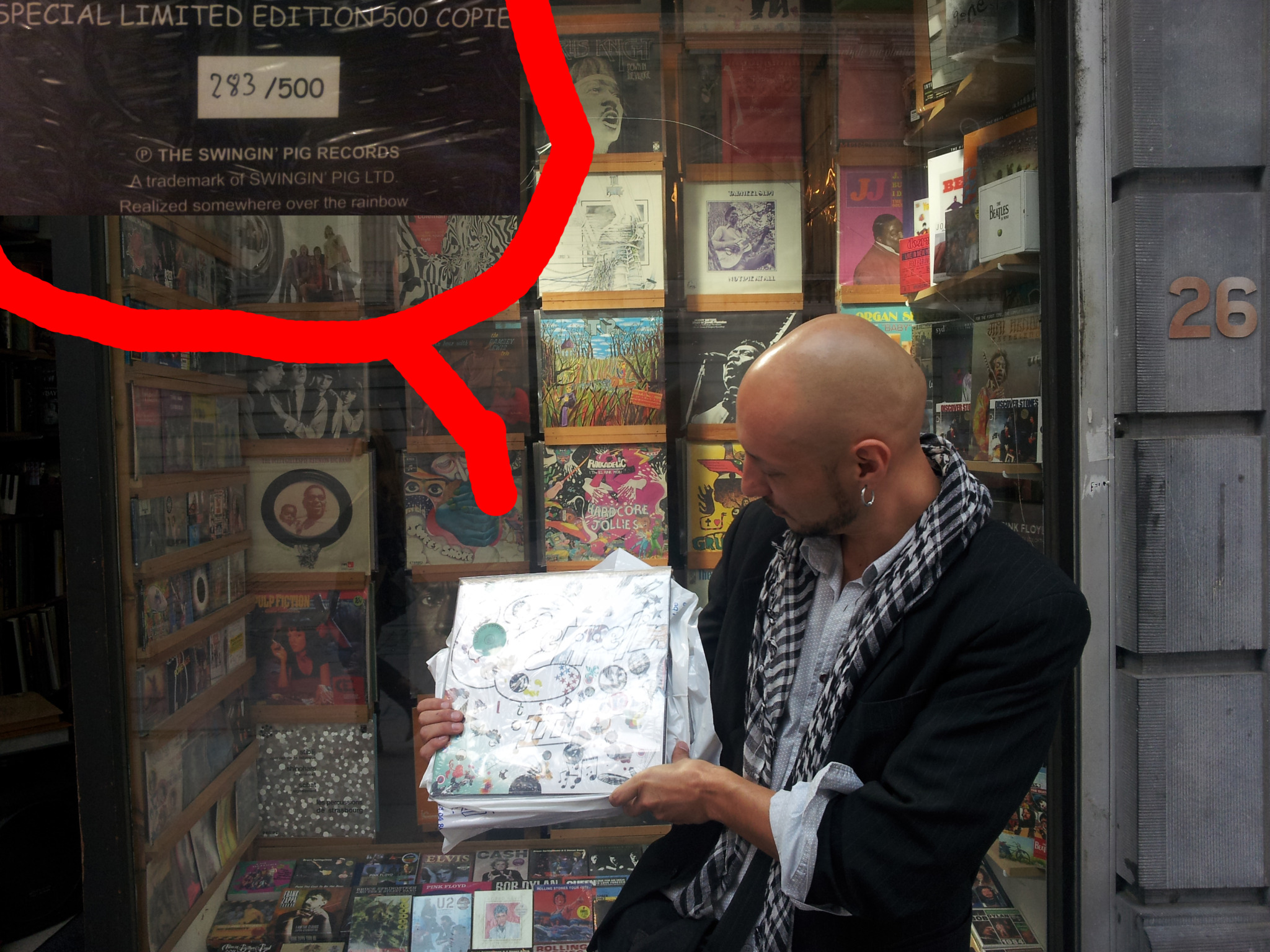
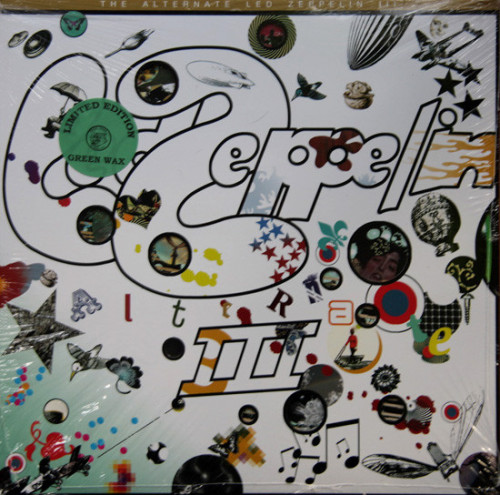
And that's all !!!
Thank you for read !!!!
Have great day :)
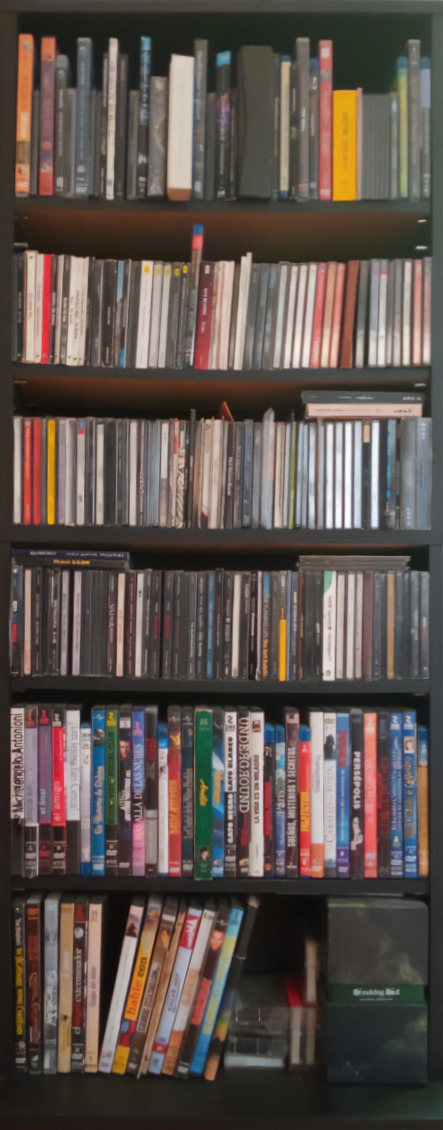 |
| Some CDs and movies 😉 |



























Comments
Post a Comment